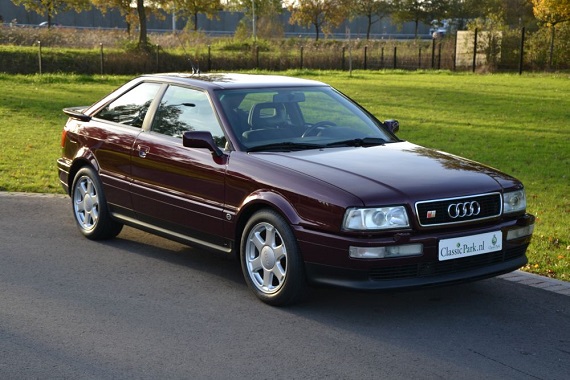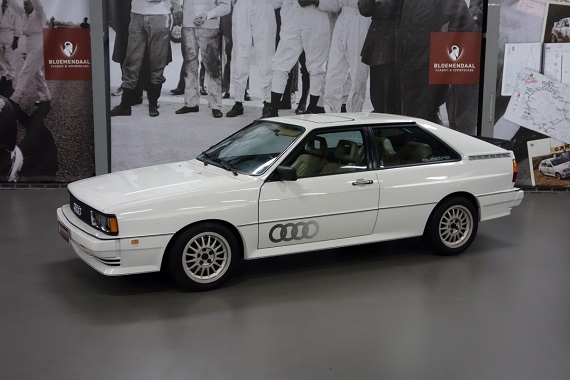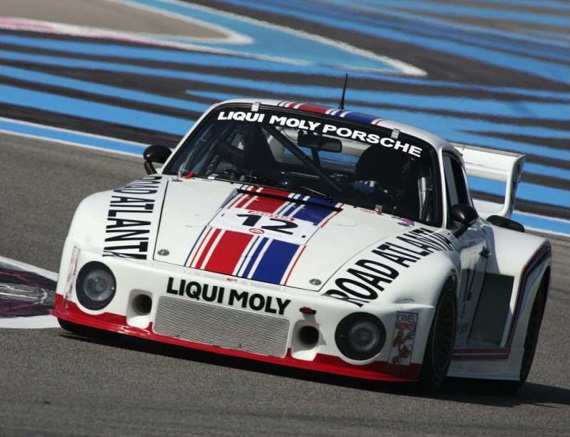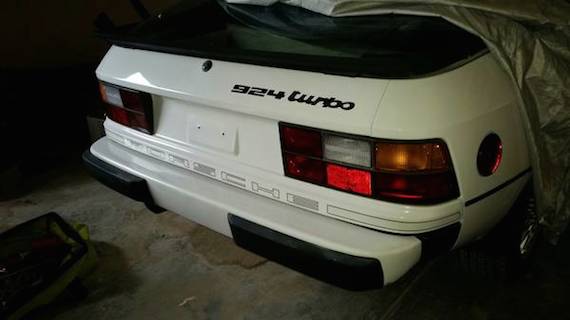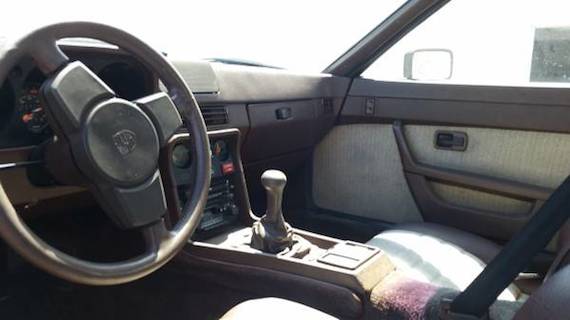For many people, the third generation Audi Coupe wasn’t quite the match for the car that it replaced. Launched in 1988, even Audi would seem to agree; it continued to produced the original Quattro through 1991, alongside its seeming replacement. While the looks of that replacement – the 20V turbocharged S2 – were considerably more sedate than the Quattro, it was nonetheless a handsome car. Though the iconic flares and chunky styling was replaced by a more rounded look, there were many advantages to the newer cars. First off, they were considerably safer with a stiffer structure and passive safety systems to protect drivers and passengers (anyone else remember the seatbelt pretensioning “PROCON-10” system?). Additionally, the smoother styling meant the car was much quieter at speed than the Quattro ever had been. The drivetrain was nearly identical to the end of run “RR” Quattros, right down to the new Torsen differential in the rear with electronic lock. And unlike its predecessor, and though few people remember, there were three versions of the S2 available; the oft-emulated Coupe, the highly desirable Avant, and the quite rare sedan of which only around 300 were produced. But as this is Coupe Week, we’re taking a look at one of the 2-door variants, of course!
Tag: Turbocharged
I know what you’re thinking from the earlier post; “Really Carter? You’re going to do a Coupe GT and not a Quattro? Don’t be silly! Of course, the legendary and original turbocharged all-wheel drive Coupe is on my list for Coupe Week, and Paul spotted this stunning example on Classic Driver. It may be one of the lowest mile Quattros in existence, and certainly one of the best outside of the museum. While interest in the Quattro has surged thanks to Audi finally acknowledging in their ad campaigns that they made cars before the A4, the truth is that too long the Quattro was an unappreciated giant of automotive design. How unappreciated? Well, even as interest grows we’ve seen quite an odd trend; Europeans have been reverse-importing U.S. spec cars back to Europe. Such is the case with this example; originally a U.S. spec car that is back up for sale after returning to European soil:
CLICK FOR DETAILS: 1983 Audi Quattro on Classic Driver
4 CommentsEven though they don’t generally get the big headlines, arguably the Porsche 934 and 935 were the most important car in developing the racing history and reputation of Porsche. While the 356 and early 911s were certainly notable, it was in the mid-1970s with the introduction of turbocharged 911 in 935 form that Porsche developed a sizable following of independents who raced the all-conquering Turbos. In turn, it was these race successes that convinced enthusiasts that the Porsche 930 was THE car to have. The 935 was, in many ways, a development of the earlier 934. Wide flares coupled with wheels and brakes from the prototype category 917 and 936 gave a purposeful and classic look. While the roofline and doors remained effectively the same as the production cars, few other details matched what you could buy at the dealer. One of the biggest developments was the aerodynamic “Slantnose” developed with help from Kremer; it would become the signature look for not only the 935s but also the most expensive versions of the 930 in the 1980s. The 935 also helped breach the gap in between the 917 program and the start of the 956/962; while the 936s were the direct transference between the two, it would be the 935 that would carry the Porsche flag around the world. Amongst the notable wins for the 935 were around 150 international victories including all-out victory at Le Mans in 1979 and multiple wins at both Sebring and Daytona. All of the top-tier racers of the day drove them, and top teams that still race today cut their teeth on the 935, such as todays example run by Reinhold Joest:
CLICK FOR DETAILS: 1978 Porsche 935 Kremer K1 on racecarsdirect
4 CommentsPablo from flüssig magazine has checked in with us once again, evaluating this 1980 Porsche 924 Turbo for sale in Denver that was sent to us from our reader Duncan.
Porsche’s plan in 1980 was to keep the 924 Turbo’s price under twenty grand. Now if I were to tell you that in the face of a weakening dollar against a strong Deutsch Mark that USD $20,000 has the same buying power today as USD $57,115, you’d not only have to pick your jaw up off the floor, you’d wonder why the hell Stuttgart decided it a savvy move to wipe the 5-stud hubs and rear disc brakes clean off the build sheet replacing them with four lugs and a pair of drums for Turbos destined to the US to stay under that price. Let me explain.
Porsche was still a small company 35 years ago compared to, say, their neighbors at Daimler–Benz. And when you’re a David, you do what have to in order to keep that needle millimeters away from the red lest A: you get consumed by Goliath, or B: you close up shop. Simple as that. So in order for Stuttgart to continue selling its relatively new entry level product at a far from entry level price in a market that was allotted 50% of its Fahrzeug (incoming CEO Peter Schutz would change that in 1981 to lessen dependence on the US market), costs had to be cut somewhere. Unfortunately, the rear binders were it. The way they saw it, if the 50 states version was detuned to put out 143bhp @5500 RPM and 147 lb-ft of torque at 3000 RPM further crippled by a smaller turbo, catalytic converter, and oxygen sensors, a front disc/rear drum set-up like that found on the normally aspirated 924 would be more than adequate.
The 924 Turbo made its appearance on our shores in July of 1979 as a 1980 model (easily distinguished by an exposed fuel filler cap) in a limited batch of 600 cars in an effort to keep dealers and journalists from screaming like spoiled little brats since Porsche had already started production of the 1979 model year in the summer of ’78. When you figure in that the European/ROW version got 170bhp, 180 lb-ft of torque, a larger KKK K26 turbocharger with a wastegate, and disc brakes all around, who can blame anyone for throwing a tantrum? Matter of course.
Let’s shift the subject to a more positive note and discuss more noteworthy attributes of the US spec 931. Labeled engine version M31.02, these lumps were built in Zuffenhausen and not at VW’s Salzgitter plant sporting a completely redesigned head with inlet valves that were 3mm larger (36mm) than the 924 normal allowing the engine to suck a combustible mixture of larger volume while platinum tipped spark plugs were moved closer to the inlet valves as opposed to the exhaust valves as in the 924 normal. It must noted that the normally aspirated 924 used a head of Heron design meaning that the underside of cylinder head was machined flat since the combustion chamber was recessed in the piston crown providing a “swirl effect†to the fuel/air mixture on the upstroke whereas the turbo would have the combustion chamber in the head itself. Compression ratio remained the same on all versions at 7,5:1 that increased geometrically to 10,8:1 when the turbo was spooled up to full song at 0,7 bar (9.87 lbs) beginning at around 2800 RPM. The bottom end remained the same for both the blown and unblown version, save for the new Mahle pistons, as it was robust enough to cope with the power increase.
The clutch size increased from 215mm to 225mm control hydraulically this time, cable operation was left to the normally aspirated group. Power went through a larger 25mm diameter driveshaft spinning on three bearings mating to a Porsche designed G31.02 gearbox with a revised final drive ratio of 4,71:1 used in the normally aspirated European 924 while the 0,706 5th gear was swapped out for 0,60:1, this in the name of better compatibility for our roads. While all of this may not matter one whit to one of little technical aptitude, the driver will most certainly find the Turbo’s appeal a fortiori when engaging the dog-leg first borne of racing pedigree.
Now that I’ve lain before your feet a small primer on what the 924 Turbo was about, I’d like focus your attention to this superb little brick draped in L90E Alpinweiß. The toolkit, that’s when I knew this 931 would be worth a bother…perhaps a flight in from somewhere farther. Universal pliers, rim wrench, spark plug wrench, operating rod for rim wrench, operating lever for spark plug wrench, handle and Philips/Flat head insert, and a double-ended 10mm/13mm spanner in the original tool roll pouch speaks volumes of what to expect in terms of completeness and originality with this example.
Click for details: 1980 Porsche 924 Turbo on Denver’s Craigslist
2 CommentsThe mid 1980s would be a time of serious change for Mercedes-Benz. Not only would the new 190 debut, but the W124 E class would supplant the tried and true W123 series of sedans, coupes and estates. Few cars of the modern era have had such staying power with the motoring public. No matter where my travels take me, I usually see one of these cars knocking around on the streets, sometimes in rough condition. But no matter what you can throw at these cars, they can take it. Thirty years have now passed since the final production year of the W123. This 300CD for sale in California would be a great way to celebrate that milestone.
